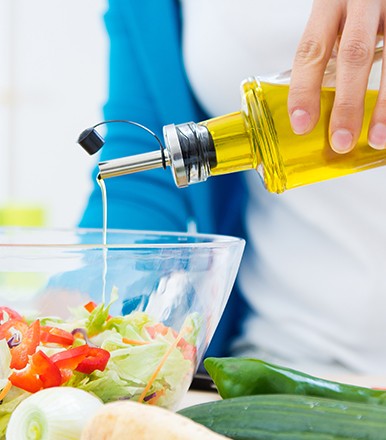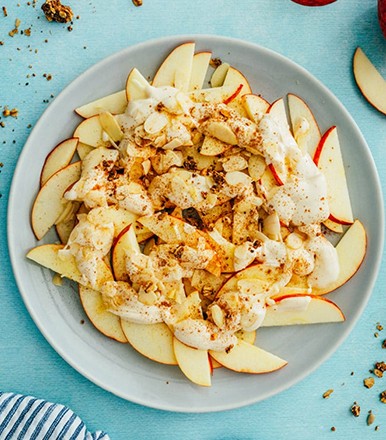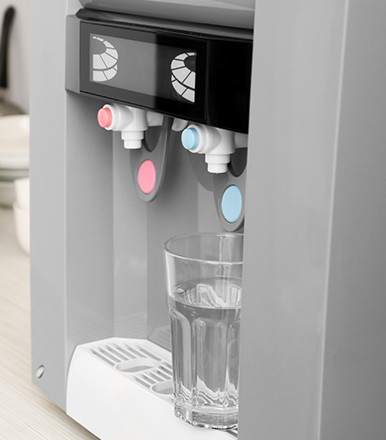Culinary oil selection significantly impacts both nutritional outcomes and food safety parameters in modern cooking applications. Comparative analysis between olive oil and refined vegetable oils reveals substantial differences in processing methods, chemical composition, and physiological effects. Research published in the European Journal of Clinical Nutrition demonstrates that oil choice influences cardiovascular health markers, inflammatory responses, and metabolic functions. Traditional Indian cooking methods historically emphasized unrefined oils before industrial processing became widespread. This comprehensive examination evaluates scientific evidence supporting olive oil superiority over refined alternatives, addressing specific considerations for diverse cooking applications including temperature requirements and flavor compatibility.
1. Rich in Heart-Healthy Fats
Lipid composition analysis reveals significant structural differences between olive oil and commercially refined alternatives. Extra virgin olive oil contains approximately 73% monounsaturated fatty acids, primarily oleic acid, compared to refined oils' variable polyunsaturated fat profiles.
Cardiovascular research findings:
Mediterranean diet studies document 30% reduction in cardiovascular events with regular olive oil consumption
Oleic acid demonstrates LDL cholesterol reduction capabilities while maintaining HDL levels
Monounsaturated fats exhibit greater oxidative stability compared to polyunsaturated alternatives
Clinical trials indicate improved endothelial function with olive oil incorporation versus refined oil consumption
Meta-analyses confirm inverse correlation between monounsaturated fat intake and coronary artery disease incidence
Chemical stability considerations: Research from the Journal of Nutritional Biochemistry indicates that monounsaturated fats resist lipid peroxidation more effectively than polyunsaturated alternatives. This stability factor becomes particularly relevant when evaluating olive oil for Indian cooking, where extended cooking times and reheating practices are common.
Refined oils undergo hydrogenation processes that may create trans fatty acid residues, while olive oil maintains natural molecular structures. Laboratory analysis confirms that even light olive oil varieties retain superior fatty acid profiles compared to heavily processed alternatives.
2. Less Processed, More Nutrients
Manufacturing processes fundamentally differentiate olive oil from refined cooking oils. Cold-pressed olive oil extraction preserves bioactive compounds eliminated during industrial refining procedures.
Processing methodology comparison:
Extra virgin olive oil: Mechanical extraction below 27°C preserves phenolic compounds
Refined oils: Chemical extraction using hexane solvents followed by high-temperature processing
Deodorization temperatures (200-250°C) destroy heat-sensitive nutrients in refined oils
Bleaching processes remove natural antioxidants and vitamin content
Winterization and fractionation further reduce beneficial compound concentrations
Preserved nutritional components:
Vitamin E content: 14.4mg per 100g in olive oil versus 2-5mg in refined alternatives
Phenolic compounds: 50-300mg/kg in extra virgin olive oil, virtually absent in refined oils
Squalene: Natural triterpene maintaining skin and cellular health
Beta-carotene: Precursor to vitamin A, lost during refining processes
Phytosterols: Plant compounds supporting cholesterol management
Research published in Food Chemistry demonstrates that these preserved compounds contribute measurable health benefits beyond basic caloric provision. When considering which olive oil is best for Indian cooking, cold-pressed varieties retain maximum nutritional density.
3. Better Heat Stability for Light Cooking
Contrary to widespread misconceptions, pure olive oil for cooking demonstrates superior thermal stability compared to many refined alternatives. Smoke point measurements provide incomplete thermal stability assessment.
Thermal stability research:
Extra virgin olive oil smoke point: 190-207°C, suitable for most cooking applications
Refined olive oil smoke point: 240°C, exceeding requirements for typical cooking temperatures
Polyunsaturated oils generate harmful aldehydes at temperatures below their smoke points
Monounsaturated structure resists thermal degradation better than polyunsaturated alternatives
Australian research confirms olive oil maintains nutritional integrity during normal cooking processes
Practical cooking temperature analysis:
Sautéing: 120-160°C - well within olive oil stability range
Pan-frying: 160-180°C - appropriate for light olive oil varieties
Indian curry preparation: typically 140-170°C during active cooking phases
Tempering (tadka): Brief high-heat exposure suitable for refined olive oil
Scientific evaluation indicates that concerns about olive oil thermal instability stem from outdated information. Modern research confirms olive oil cooking oil applications remain safe and nutritionally superior for standard cooking methods.
Laboratory studies from the University of Barcelona demonstrate that extra virgin olive oil produces fewer toxic compounds during heating compared to sunflower, corn, and soybean oils at equivalent temperatures.
4. Fights Inflammation and Oxidative Stress
Bioactive compounds in olive oil demonstrate measurable anti-inflammatory effects through multiple physiological pathways. These properties distinguish olive oil from refined alternatives lacking comparable phytochemical profiles.
Anti-inflammatory mechanisms:
Oleocanthal: Phenolic compound with ibuprofen-like COX enzyme inhibition
Hydroxytyrosol: Powerful antioxidant reducing inflammatory markers
Oleuropein: Compound supporting immune system modulation
Vitamin E: Fat-soluble antioxidant preventing lipid peroxidation
Polyphenol complex: Synergistic anti-inflammatory activity
Clinical research outcomes:
C-reactive protein reduction: 20-30% decrease with regular olive oil consumption
Interleukin-6 suppression: Significant inflammatory marker improvement
Oxidative stress reduction: Measured through decreased lipid peroxidation products
Nitric oxide enhancement: Improved vascular function markers
Antioxidant enzyme activation: Increased glutathione peroxidase and catalase activity
Studies published in Current Pharmaceutical Design confirm that these effects occur through olive oil's unique phytochemical composition, absent in refined oil alternatives. The anti-inflammatory properties become particularly relevant for populations consuming inflammatory refined oils regularly.
Research indicates that substituting refined oils with olive oil for Indian cooking can significantly reduce dietary inflammatory load, particularly relevant given spice combinations that may enhance absorption of beneficial compounds.
5. Improves Digestion and Gut Health
Gastrointestinal research demonstrates that olive oil consumption supports digestive health through multiple mechanisms unavailable with refined oil alternatives.
Digestive system benefits:
Bile acid production stimulation improving fat-soluble vitamin absorption
Gastric emptying regulation preventing digestive discomfort
Intestinal inflammation reduction through phenolic compound activity
Beneficial bacteria proliferation in gut microbiome
Mucus production enhancement protecting intestinal lining
Microbiome research findings:
Bifidobacterium and Lactobacillus population increases with olive oil consumption
Short-chain fatty acid production enhancement through prebiotic effects
Pathogenic bacteria reduction including Helicobacter pylori suppression
Intestinal permeability improvement reducing leaky gut syndrome markers
Digestive enzyme activity optimization
Clinical studies from the American Journal of Clinical Nutrition demonstrate that olive oil consumption correlates with improved digestive health markers compared to refined oil consumption. This becomes particularly relevant when evaluating is olive oil good for cooking in traditional preparation methods requiring oil for tempering and flavor development.
Mediterranean population studies consistently show lower rates of digestive disorders associated with traditional olive oil consumption patterns. These benefits extend beyond basic nutritional provision to include therapeutic digestive support.
6. Safe and Gentle for All Ages
Toxicological research confirms olive oil's superior safety profile compared to refined alternatives, particularly relevant for vulnerable populations including children and elderly individuals.
Safety considerations:
Absence of chemical solvent residues found in refined oil production
No trans fatty acid content from industrial processing
Minimal allergenic potential compared to seed oils
Natural preservation preventing rancidity through antioxidant content
Gentle processing maintaining food safety standards
Pediatric and geriatric applications:
Infant feeding compatibility: Oleic acid mirrors breast milk fatty acid composition
Elderly digestion: Easier processing compared to heavily refined alternatives
Medication interactions: Minimal interference with pharmaceutical absorption
Skin application safety: Traditional topical uses with established safety profiles
Pregnancy considerations: Supporting fetal brain development through healthy fats
Research published in Pediatric Research indicates that olive oil introduction during weaning provides optimal fatty acid profiles for neurological development. Similarly, geriatric studies confirm improved nutrient absorption with olive oil consumption compared to refined alternatives.
Food safety analysis demonstrates that olive oil's natural preservation properties reduce bacterial contamination risks compared to refined oils requiring synthetic preservatives.
7. Supports Weight Management
Metabolic research reveals that olive oil consumption correlates with improved weight management outcomes compared to refined oil alternatives, despite equivalent caloric density.
Weight management mechanisms:
Satiety enhancement through oleic acid signaling pathways
Metabolic rate improvement via monounsaturated fat consumption
Insulin sensitivity enhancement reducing fat storage tendencies
Appetite regulation through hormonal response optimization
Thermogenesis stimulation increasing caloric expenditure
Clinical research evidence:
Mediterranean diet adherents show lower obesity rates despite higher fat consumption
Oleic acid activates PPAR-alpha genes regulating fat metabolism
Postprandial triglyceride levels remain lower with olive oil consumption
Visceral adiposity reduction observed in olive oil versus refined oil studies
Long-term weight stability correlates with monounsaturated fat intake
Studies from the International Journal of Obesity demonstrate that isocaloric diets substituting olive oil for refined oils result in greater weight loss and improved body composition markers. This occurs through enhanced satiety signaling and improved metabolic efficiency.
Research confirms that quality fats promote satiety more effectively than refined alternatives, potentially reducing overall caloric intake despite higher fat density.
Conclusion
Scientific evidence consistently demonstrates olive oil's superiority over refined alternatives across multiple health and safety parameters. Processing methodology, nutritional retention, thermal stability, anti-inflammatory properties, digestive benefits, safety profiles, and metabolic effects all favor olive oil selection for cooking applications.
Check out Hello Fitness Magazine. There is never a wrong time to go on a fitness quest. Contact us and allow us to assist you in leading a better lifestyle. Follow us on Instagram. We share the best Health & Fitness related Articles for information based on healthy eating, health and fitness recommendations, health problems and their solutions, human body fitness, and much more.














